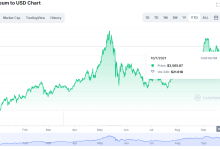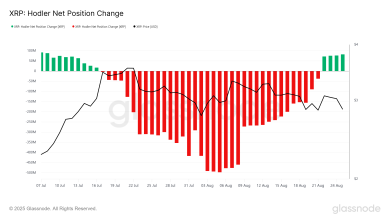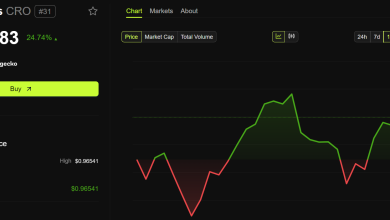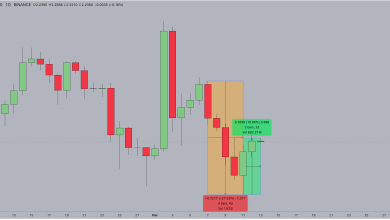BTC Mining Difficulty Hits All-Time High in 2025
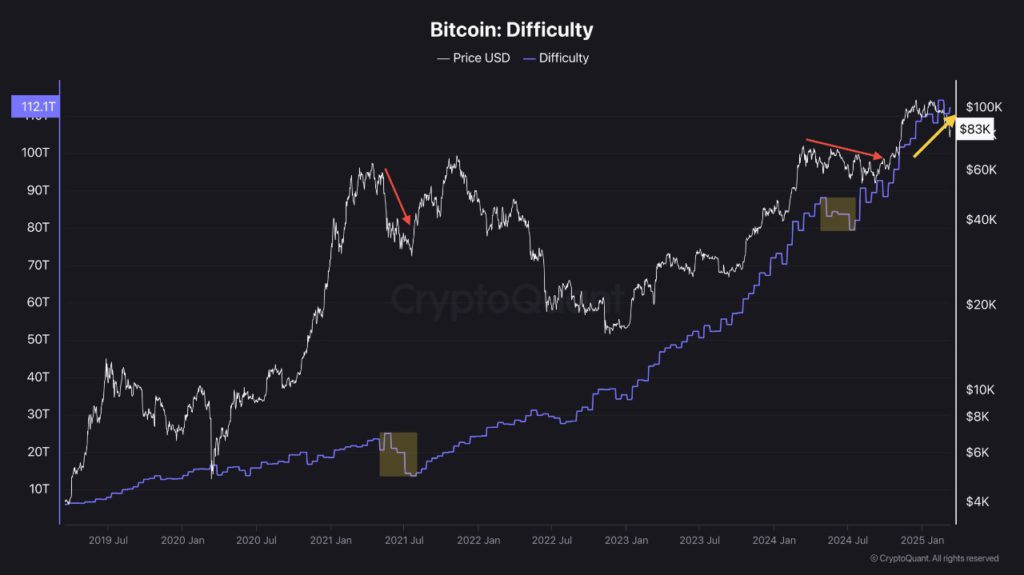
In 2025, BTC (BTC) mining difficulty reached an unprecedented peak, hitting 127.6 trillion, as reported on August 3, 2025, reflecting the immense computational power now securing the BTC network.
This milestone underscores the growing competition among miners and the robustness of BTC’s decentralized system.
As of August 3, 2025, with BTC trading between $50,000 and $80,000, this surge in difficulty has significant implications for miners, investors, and the broader crypto ecosystem.
This article explores the reasons behind the all-time high in BTC mining difficulty, its impact on the market, and what it means for the future of BTC.
What Is BTC Mining Difficulty?
BTC mining difficulty measures how challenging it is for miners to find a valid hash for a new block on the BTC blockchain.
It adjusts automatically every 2,016 blocks (approximately every two weeks) to maintain an average block time of 10 minutes.
A higher difficulty indicates more computational power (hashrate) is required to solve the complex mathematical puzzles that validate transactions and earn block rewards.
This self-regulating mechanism ensures BTC’s predictable issuance and protects its scarcity, a key feature of its value proposition as “digital gold.”
How Difficulty Works
-
Hashrate Influence: As more miners join the network or deploy advanced hardware, the hashrate (total computational power) increases, raising difficulty to slow block production.
-
Adjustment Mechanism: If the hashrate drops (e.g., miners leave due to unprofitability), difficulty decreases to maintain the 10-minute block interval.
-
Stock-to-Flow Ratio: BTC’s difficulty adjustments maintain its high stock-to-flow ratio (currently ~120, twice that of gold), ensuring low new supply and Value stability.
The 2025 Milestone: 127.6 Trillion
BTC’s mining difficulty surged to an all-time high of 127.6 trillion in early August 2025, driven by a record hashrate of 933.61 exahashes per second (EH/s).
This peak followed a year of intense miner Operations, with nine difficulty increases and five decreases in 2025, resulting in a net 32.24% gain year-to-date. Key factors contributing to this milestone include:
1. Surging Hashrate
-
The seven-day average hashrate reached 918–933.61 EH/s in 2025, nearing its all-time peak of 925 EH/s.
-
Miners deployed newer, more efficient Application-Specific Integrated Circuits (ASICs), boosting computational power.
-
Public mining companies like CleanSpark and MARA expanded operations, with CleanSpark reaching 45.6 EH/s and MARA mining 950 BTC in May 2025.
2. Post-Halving Dynamics
-
The April 2024 BTC halving reduced block rewards from 6.25 BTC to 3.125 BTC, increasing miners’ reliance on transaction fees and higher BTC Values for profitability.
-
Despite lower rewards, BTC’s Value recovery (from $17,000 in 2022 to $50,000–$80,000 in 2025) attracted new miners, driving hashrate and difficulty higher.
3. Technological Advancements
-
Innovations in mining hardware, such as next-generation ASICs, improved Effectiveness, allowing miners to contribute more hashrate with lower energy costs.
-
Access to low-cost energy sources, particularly for large-scale miners, sustained profitability despite rising difficulty.
4. Institutional and Corporate Involvement
-
Public miners like MARA accumulated 49,179 BTC as treasury assets, signaling long-term confidence in BTC’s value.
-
Institutional adoption, including BTC ETFs and corporate treasury strategies, bolstered miner optimism, encouraging investment in mining infrastructure.
Effect on Miners
The record-high difficulty has significant implications for BTC miners:
-
Increased Costs: Higher difficulty requires more computational power and energy, raising operational costs. Miners with outdated hardware or high energy costs face tighter margins.
-
Consolidation: Smaller miners may exit or merge with larger operations, as only those with efficient equipment and cheap energy remain competitive.
-
Profitability Pressures: With hashValue (revenue per unit of hashrate) at $58.67 and transaction fees low (~2 sat/vB or $0.30), miners rely on BTC’s Value appreciation to stay profitable.
-
Strategic Shifts: Some miners, like MARA, diversify into high-performance computing (HPC) or lend BTC for yield, while others hold mined coins as treasury assets.
Despite these challenges, a projected 3% difficulty drop to ~123.7 trillion on August 9, 2025, could offer temporary relief by making block rewards easier to earn.
Effect on the BTC Network
The all-time high difficulty strengthens BTC’s ecosystem:
-
Enhanced Security: A higher hashrate makes the network more resistant to 51% attacks, reinforcing trust in BTC’s decentralization.
-
Scarcity Preservation: Difficulty adjustments maintain BTC’s stock-to-flow ratio, with ~94% of its 21 million BTC already mined, supporting its value as a scarce asset.
-
Market Sentiment: Rising difficulty Indications miner confidence, often correlating with bullish Value Patterns, as seen in past cycles (e.g., 2021 bull run).
However, low Blockchain-based Operations (e.g., minimal transaction fees) suggests a divergence between mining infrastructure growth and network usage, which could temper short-term Value gains.
Implications for Investors
For crypto investors, the record difficulty has mixed implications:
-
Bullish Signal: Historically, rising difficulty and hashrate precede bull runs, as seen in 2021 when nine consecutive positive adjustments coincided with BTC’s $69,000 peak.
-
Value Pressure: Higher difficulty reduces miner profitability, potentially leading to sell-offs if Values stagnate. For example, 30,000 BTC left miner wallets from November 2023 to July 2024 during unprofitable periods.
-
Long-Term Confidence: Long-term holders (LTHs) show a 357% profit ratio in July 2025, with minimal selling, indicating strong conviction in BTC’s value.
Investors using strategies like Dollar-Cost Averaging (DCA) can Fundsize on volatility, buying during dips to offset potential corrections.
The Crypto Landscape in 2025
As of August 3, 2025, BTC’s mining difficulty reflects a maturing market. The network’s hashrate growth, driven by technological advancements and institutional involvement, underscores BTC’s Adaptability post-2024 halving.
However, miners face challenges from rising costs and low transaction fees, while investors navigate a market influenced by global liquidity and ETH ETF growth.
A projected difficulty drop on August 9 offers short-term relief, but the long-term Pattern remains upward, signaling robust network health.
What to Do as a Crypto Enthusiast
-
Stay Informed: Monitor difficulty and hashrate Patterns using platforms like CoinWarz, CryptoQuant, or Blockchain.com.
-
Invest Wisely: Use DCA to mitigate volatility, focusing on BTC’s long-term value as a scarce asset.
-
Secure Assets: Store BTC in a hardware wallet (e.g., Ledger Nano X) to protect against exchange risks. Back up seed phrases offline.
-
Understand Cycles: Recognize that difficulty spikes often precede Value rallies, but short-term corrections are possible.
-
Explore Mining: For advanced users, research cloud mining or low-cost energy solutions, but beware of high costs and scams.
